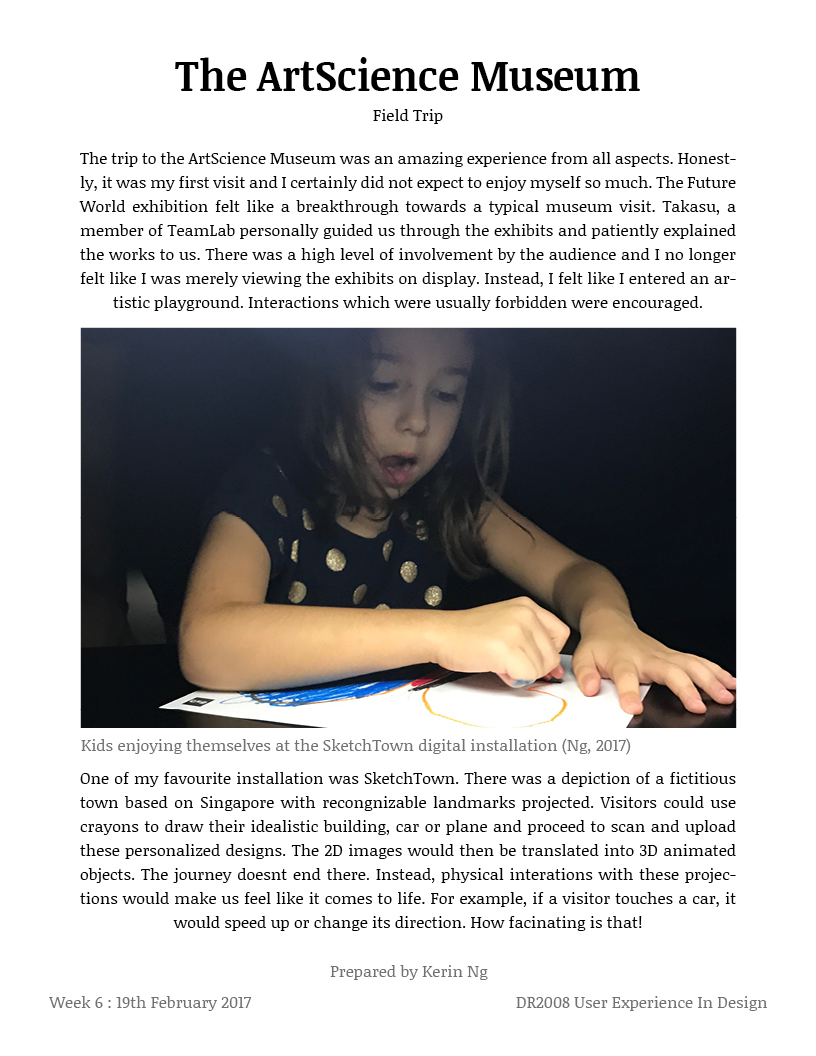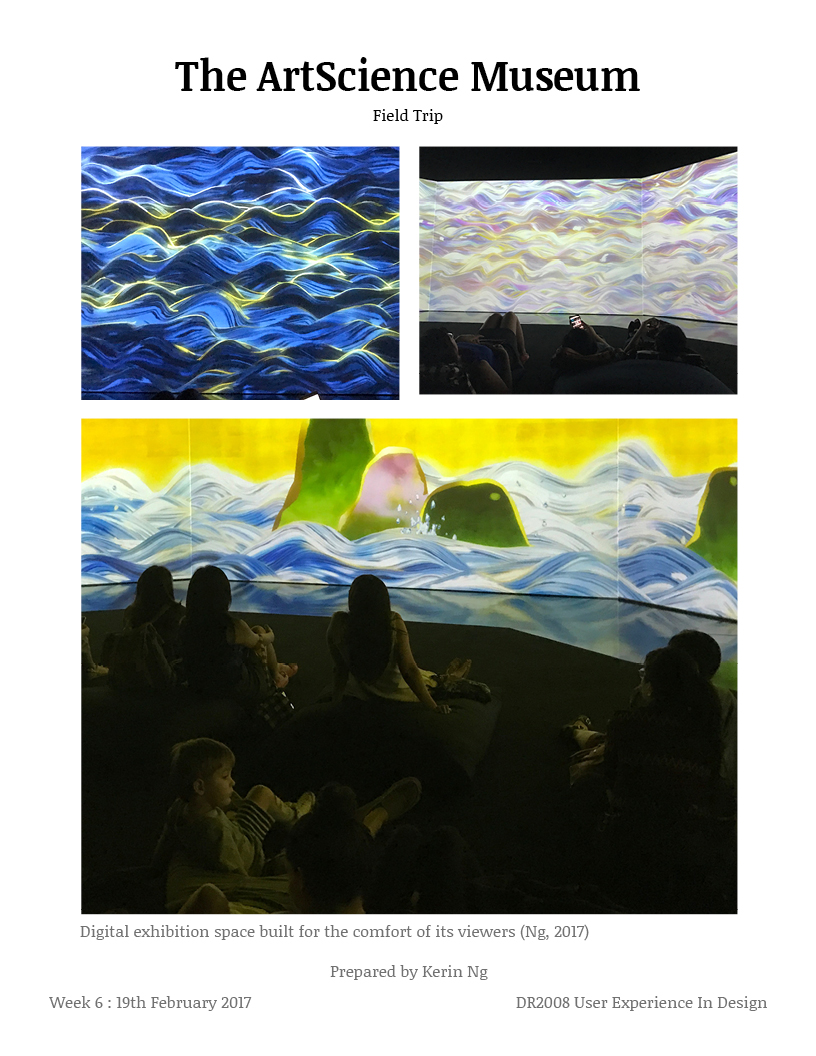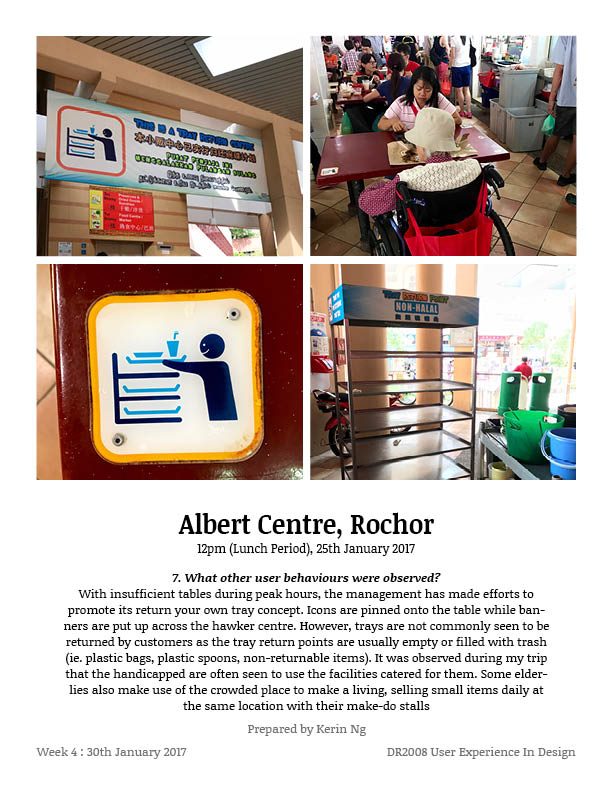Group members:
Chua Qi Wei Valerie, Fong Hin Wai, Jordyn Khoo, Kerin Ng
Group statement:
Our group is keen on the topic of recycling and how a product (physical or intangible) would help to foster new habits that can facilitate the act of recycling. Inspired our experiences abroad on an exchange semester previously at various destinations: Canada, Chicago and Taiwan, we observed how different cultures and habits resulted in different perception towards recycling. Through the project, we hope to come up with an innovative yet intuitive design approach to encourage people in Singapore to recycle, while fulfilling an educational stance.
In order to come up with an appropriate and relevant design idea, our group has decided to first proceed with first-hand account research. We intend to engage in both online surveys as well as in depth interviews after. Firstly, an online survey of 100 people would be carried out to collect information about the recycling habits, so as to better understanding the recycling situation in Singapore. A desired age range would be chosen from the survey as the target audience of our design challenge. An initial design brainstorming session will then be carried out, by administering design thinking to find out what are the possible solutions that will best target the needs of the people. In-depth interviews would also be carried out to further clarify our queries and extract data to finalize our design solution. Following the interviews, subsequent actions would involve prototyping, bodystorming and refinement of the design solution.
Project Timeline:


Members Responsibilities:
 References to Singapore context:
References to Singapore context:
Current initiatives, problems faced, etc etc
- Raw food waste -> compost
- Low household recycling rate despite 15 years of National Recycling Programmes (NRP)
- Cause of low recycling rate: In-house refuse chute too convenient so people don’t want spend time going downstairs to recycle items
- People not sure what can be recycled what cannot be recycled (e.g McD drink cup, wash before recycling? If so will it waste water? – Ironic)
- Waste segregation education to be improved
- Current initiatives: ‘Cash for Trash’, ‘Green Homes’
- Efforts to not only recycle materials, but also reuse water
http://news.asiaone.com/news/singapore/recycling-incentive-schemes-yet-gain-widespread-support
- ‘Save-As-You-Reduce’- Let those who throw less pay lower waste collection fees, earn points to redeem voucher for every lg of waste recycled
- 8/10 household not heard of such schemes
- Certain areas have better response for ‘Cash-for-Trash’ scheme
- Monetary incentive not viable as a long term solution to bring up recycling rates in SG
- Eco-precinct in SG: Treelodge estate at Punggol – recycle 3x more than other estates
- Government exploring usage-based pricing waste disposal system
- Zero waste – entire concept of waste should be eliminated
- Involves reducing consumption, minimising wastage, maximising recycling and composting, and ensuring that products and materials are designed to use less resources and made to be reused, recycled or biodegradable
- Through this lifespan of Landfills will be increased
- Not only recycle, but reduce and reuse
- Programmes:
- Save Food Cut Waste – educate individuals and businesses on the environmental and social impacts of food waste
- Food Hero App – Developing a Food waste matching app for those with excess or unsold food to sell at a discounted price or a giveaway
- Bring Your Own (BYO) campaign – sign up retailers to offer incentives to customers who bring their own reusable bottles, containers or bags
- Let’s Recycle Together – encourage more HDB residents to recycle using existing blue recycle bins in their estate, and to recycle correctly
- Waste is not Waste – an online business platform that facilitates waste materials and unwanted items from companies that no longer need them in their operations to non-profit organisations, schools and designers that can utilise that waste
- Circular Economy Singapore (CES) – informal network of individuals, businesses and organisations that embrace the concept and principles of the circular economy
http://www.straitstimes.com/opinion/sorting-out-the-recycling-blues-of-singapore
- Not difficult to recycle in Singapore theoretically
- A recycle bin under each HDB block
- The step for separating recyclables have been taken off the shoulders of the public as workers at the recycling plant will take care of sorting them
- But as of June 2016, recycling rates in Singapore still remain at mere 19% as compared to Taiwan (55%), Germany (64%) and South Korea (59%)
- Two rubbish chute have been implemented in new HDB blocks, one for normal waste, one for recycle materials improving recycling rate
- However, it is not a cost efficient method and the process to implement theses chutes in all existing HDB estates will be too time consuming
- Proposed idea would be an incentive system accompanied by law implementations on the Government’s side, or a competition between blocks on who recycle more
- If low recycling rates continue on, Singapore’s only Landfill (Pulau Semakau) will be filled up in 2035
- Sometimes, recycled waste are contaminated by food waste causing them to be unusable for recycling
- Put a brake on Singapore’s green initiatives
References to other projects:
Wecyclers enables low-income communities to make money from waste where lets families exchange garbage for consumer goods via an SMS-based point system.
Implementation of a waste framework that would facilitate an effective product materials circular reintegration through waste auditing and segregation
https://link.springer.com/article/10.1057/rlp.2010.10
Recycling Initiatives from around the world. Extracted project ideas include:

- Jumbo Jet Hostel, where an unused 1976 Boeing 747-200 airplane was converted into a hostel, fitting the demands for cheap and affordable lodging around the airport. This makes use of and reinvigorates existing dead spaces

- Upcycling (by converting unwanted products and creating new value for them). An example from the site includes the making of dresses using maps and used coffee filters

- ‘Oilpots’ are distributed by city officials in Barcelona to create new value to the huge amounts of cooking oil are disposed everyday and curb the local water pollution problem. Users can pour their cooking oil into the ‘Oilpot’, which will separate oil from food

- The Dream Machine in the United States encourages recycling by incentivising people through their act. Simply donate your recyclable product e.g. an empty can, into the vending machine and gain points or prizes

- Recycled plastic bags are used in a light installation named Recycling Sunday by art collective Luzinterruptus in Warsaw, Poland, as an attempt to bring recycling awareness to locals
 http://inhabitat.com/top-6-recycling-and-reuse-initiatives-from-around-the-globe/
http://inhabitat.com/top-6-recycling-and-reuse-initiatives-from-around-the-globe/
Implementation of a system within the workplace that could modify existing habits. Extracted ideas include:
- Setting up a double sided printing system
- Having staff to activate their print jobs at the printer instead of it directly from their computers so as to reduce print jobs that are never collected
https://www.sustainablebusinesstoolkit.com/top-five-office-recycling-initiatives/
Household recycling bins
- Solecan™ works as a dual bin, where one component is to facilitate regular trash while the other is for recyclable waste. By having compartments, this household bin encourages residents to recycle and reduces the hassle of having to sort of items into recyclable or non-recyclable products. Most importantly, residents can also dispose their waste efficiently by detaching the bins

https://www.kickstarter.com/projects/512182954/solecantm-your-single-can-trash-and-recycling-solu
Other household bins




Images from (from top to bottom): https://www.bobvila.com/articles/bob-vila-radio-home-recycling-centers/#.WM98_PmGO00
http://www.knighton-tools.co.uk/acatalog/Recycling_Bins.html
http://www.argos.co.uk/product/8429054
https://www.recyclingbins.co.uk/for-kitchen.html
































































